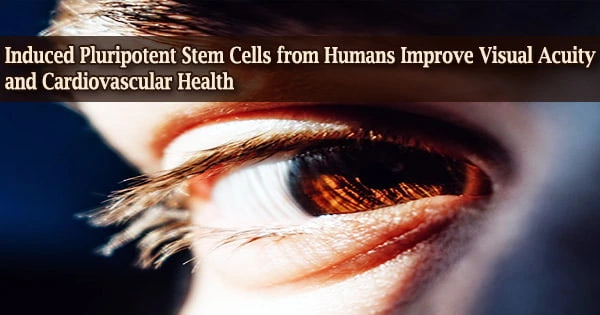Researchers at Indiana University School of Medicine are investigating novel regenerative medicine approaches to better manage vascular health complications from type 2 diabetes, which could one day support blood vessel repair in the eye among diabetic patients with early retinal vascular dysfunction, in collaboration with the University of Alabama at Birmingham and five other institutions.
These research efforts include discovering and implementing innovative methods for differentiating or maturing human induced pluripotent stem cells (hiPSCs) into the mesoderm subpopulation of cells with vascular reparative abilities.
“Vascular diseases afflict hundreds of millions of people in the world,” said Chang-Hyun Gil, MS, Ph.D., a postdoctoral fellow in the Department of Surgery and co-first author of the study. “In this study, we focused on the retinal vessel in type 2 diabetes. Our results demonstrate the safe, efficient, and robust derivation of hiPSC-derived specific mesoderm subset for use as a novel therapy to rescue ischemic tissues and repair blood vessels in individuals with vascular diseases. The results provide a foundation for an early phase clinical trial.”
Investigators genetically reprogrammed diabetic and non-diabetic peripheral blood cells into hiPSCs and developed the cells into specific blood vessel reparative cells in a multi-site, early-phase study just published in Science Advances.
Results revealed considerable improvement in visual acuity and electroretinograms with the restoration of vascular perfusion after injection into animal models with type 2 diabetic murine (T2D) retinal impairment.
They theorized that hiPSC-derived vascular reparative cells may be used to generate endothelial progenitors within vivo vasculature reparative characteristics in diabetes patients.
Unlike the use of embryonic stem cells (ESCs), genetically engineered hiPSCs do not carry the ethical challenges ESCs possess that limit their possible usage, and hiPSCs are being increasingly recognized as a viable alternative in study design and application as a cell therapy for human disorders.
Chang-Hyun Gil
“Unlike the use of embryonic stem cells (ESCs), genetically engineered hiPSCs do not carry the ethical challenges ESCs possess that limit their possible usage, and hiPSCs are being increasingly recognized as a viable alternative in study design and application as a cell therapy for human disorders,” Gil said.
According to the Centers for Disease Control and Prevention, more than 37 million Americans have diabetes, accounting for more than 11% of the population. Furthermore, diabetes-related problems have increased in both young adults (18 to 44) and adults (45 to 64).
Through injury to the small and big microvessels that feed these tissues, these problems create severe metabolic changes that impair the cardiovascular, ocular, peripheral nerve, and renal systems.
In 2019, over 11% of persons aged 18 and up reported significant visual problems or blindness, while 1.87 million adults were diagnosed with major cardiovascular disease.
“This work by Dr. Gil represents a monumental step forward in the application of induced pluripotent stem cells in treating the complications of diabetes,” said Michael P. Murphy, MD, the Cryptic Medical Research Foundation Professor of Vascular Biology Research at IU School of Medicine, a vascular surgeon at IU Health and Eskenazi Health and a co-author of the study.
Researchers enhanced hiPSC to develop endothelial cells with vascular reparative capabilities similar to endothelial colony-forming cells (ECFC).
Endothelial cells are cells that line the inside of blood arteries, lymph veins, and the heart, and they play an important role in controlling vascular function and inflammatory responses. Endothelial cells govern the transfer of proteins from blood into tissues and control blood flow.
Gil claims that a specific mesoderm subset that expresses KDR, NCAM1, and APLNR (KNA+ mesoderm) has a higher capacity to develop into ECFC and create functional blood vessels in vivo, and that mesoderm populations can rectify vasodegeneration of injured retinal arteries. Electroretinograms demonstrate increased neural retina function, while optokinetic nystagmus experiments suggest better vision.
“The next translational step of the work is to transfer the research protocols reported for differentiation of the hiPSC into to S-KNA+ cells into large scale manufacturing processes,” said Mervin C. Yoder, MD, distinguished professor emeritus and research advisor for the Indiana Center for Regenerative Medicine and Engineering.
Yoder is a collaborator of the study and the scientific creator of Vascugen, a firm dedicated to developing treatments for life-threatening microvascular diseases.
Vascugen, Inc., a company focusing on producing vascular reparative cells from induced pluripotent stem cells, has licensed some of this work through the Indiana University Innovation and Commercialization Office.
Maria B. Grant, MD, a former Marilyn Glick Professor of Ophthalmology at the Indiana University School of Medicine Eugene and Marilyn Glick Eye Institute and current endowed chair of ophthalmology at UAB, is another study coauthor.
This is a very translational study, according to Grant, and it is a follow-up to a grant she and Yoder have been working on for the past 20 years on stem cells and how they may be utilized to repair blood vessels in the eye.
While hiPSCs can take a long time to grow, the research team shortened the technique to reduce the time it takes to grow them and make them more feasible to translate into a human therapeutic for ocular blood vessel repair.
“At UAB, we took the stem cells and hiPSC cells and studied them,” she said. “Science is really team science. I bring all the eye experience and some stem cell experience, and Dr. Yoder brings a lot of stem cell experience. It’s a complementary collaboration.”
“I want to express my greatest thanks to Dr. Yoder, Dr. Grant, and Dr. Murphy for their support,” Gil said. He will remember Yoder for “his dedication, passion, patience and kindness” and Murphy for supporting him in completing the study.





